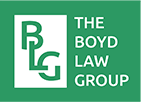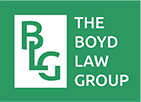Towards the end of September 2019, the New York City Commission on Human Rights (NYCCHR) released a series of guidelines to inform New York City employers what constitutes discrimination on the basis of immigration status and national origin. With the delicacy of current debate about immigration policy attention to these guidelines is particularly important.
These new guidelines include the following important guiding statements:
- Discrimination or harassment in favor of U.S. citizens over other work-authorized individuals is generally prohibited.
- Questions about work authorization must be made in a non-discriminatory manner.
- All hired employees have the right to be treated in a non-discriminatory manner.
- Employers must not engage in document abuse and ask for verification or re-verification documentation beyond the documents authorized by federal law. This means that an employer cannot repeatedly ask an employee to continue to produce documentation regarding his/her status as an immigrant or U.S. Citizen.
- Implementing an adverse action based solely on a “no match” letter from the Social Security Administration is prohibited
- Threatening investigations by U.S. Immigration and Customs Enforcement (ICE) for harassing purposes violates the New York City Human Rights Law (NYCHRL).
- Upon being hired, undocumented employees are protected by the NYCHRL.
- Retaliation is prohibited if an individual opposes discrimination based on his or her national origin or perceived immigration status. The purpose of this provision is to encourage individuals who are victims of this type of discrimination to speak out about their treatment and to allow them to exercise their rights granted by the NYCHRL to the fullest extent
In addition to developing a series of rules in regard to employment discrimination on the basis of national origin and immigration status, the New York City Commission of Human Rights provides employers with a series of examples of actions that constitute discrimination on these bases. NYCCHR provides that discrimination occurs in the below examples:
- A construction company sponsors a temporary worker for the summer with an H-2B visa. The company does not allow the worker to take any breaks for his 12-hour shift, while the company allows U.S. citizen workers to take two breaks during their 12-hour shifts. The company threatens to not sponsor the worker again for next season if/when he complains.
- An employer has not paid a non-citizen worker his wages in a few months. When the worker asks for the wages he is entitled to, the employer’s response is that his wages have been cut in favor of another U.S. citizen employee’s wages. When employee objects, the employer threatens the employee that if he complains further, he will call ICE.
- An employer refuses to pay health benefits for an employee’s spouse – where normal business practice is to extend such benefits to other employees’ spouses – because the spouse is not a U.S. citizen.
- An employee develops a medical condition and requests an accommodation to attend necessary medical appointments once a week. The employer denies her request. When the employee informs her employer that another employee is permitted to leave work for medical appointments, the employer tells her that she does not have that right because she is an undocumented immigrant. The employer then threatens to call ICE if she misses work for any reason.
- A job applicant’s social security card is refused and an employer instead demands a birth certificate because the applicant speaks English with an accent
- A hotel prohibits its housekeepers from speaking Spanish while cleaning because it would “offend” or make hotel guests uncomfortable.
Some of these changes to the law are subtle, but all are important and the law just keeps on evolving. We at BLG are doing our best to keep ourselves – and you – up to speed! #BLGemploymentlawyers

